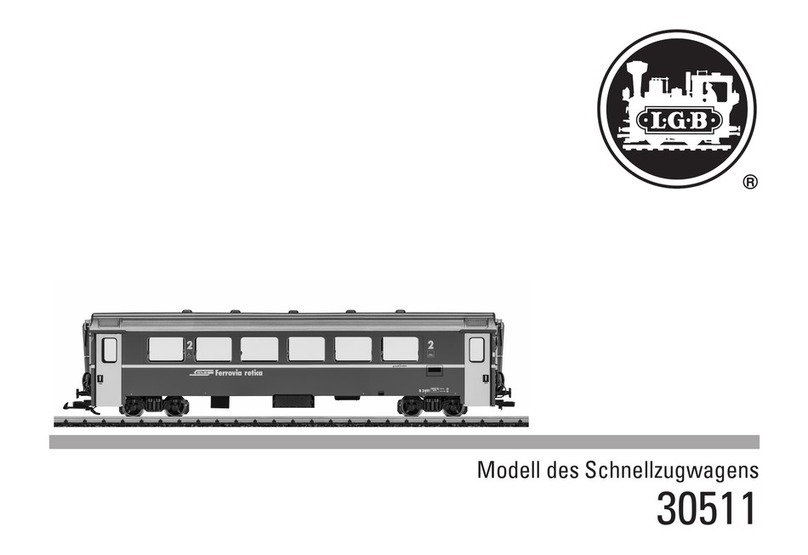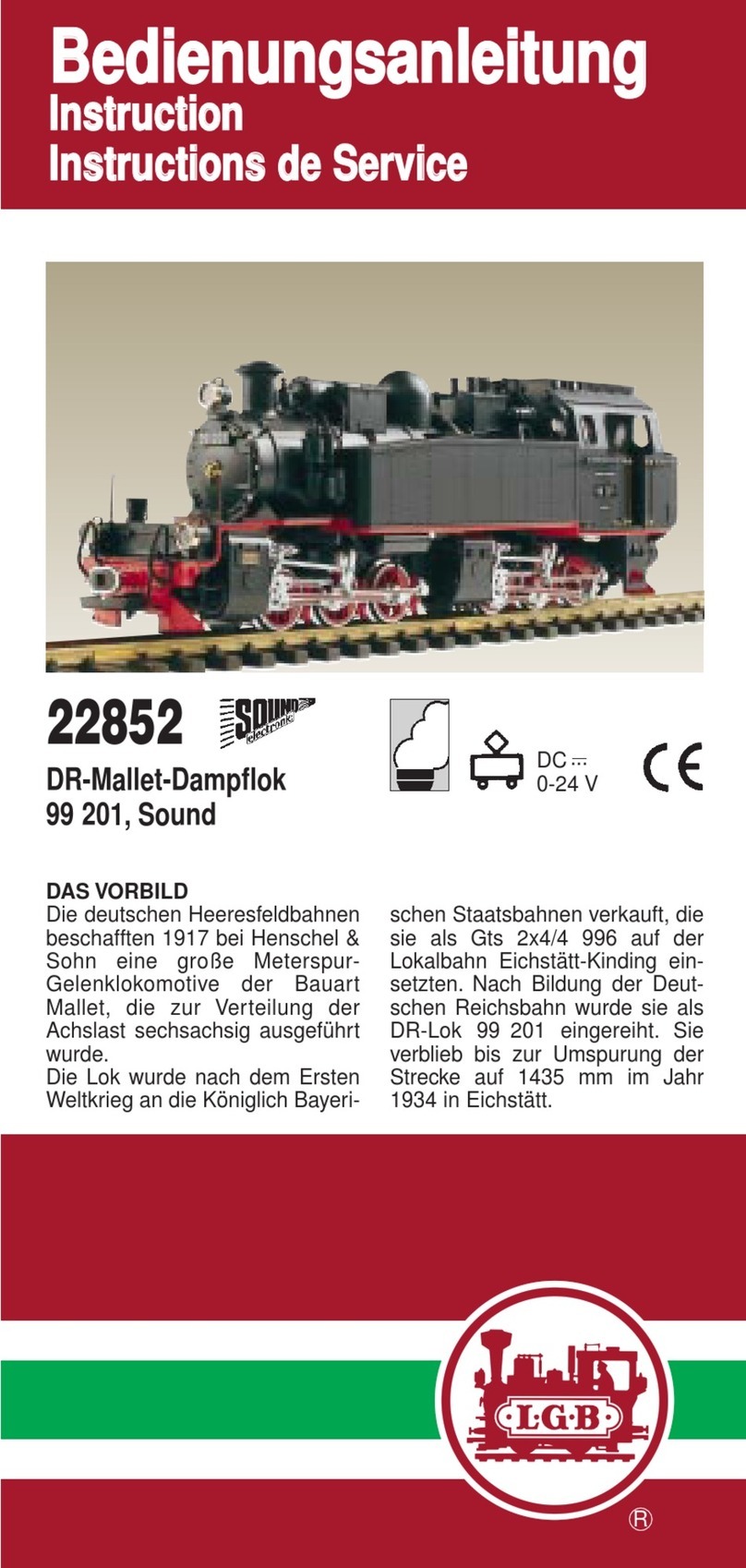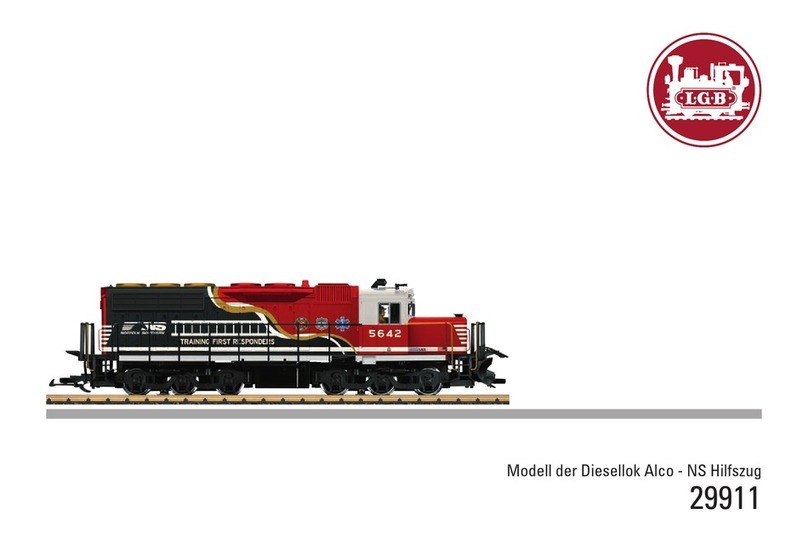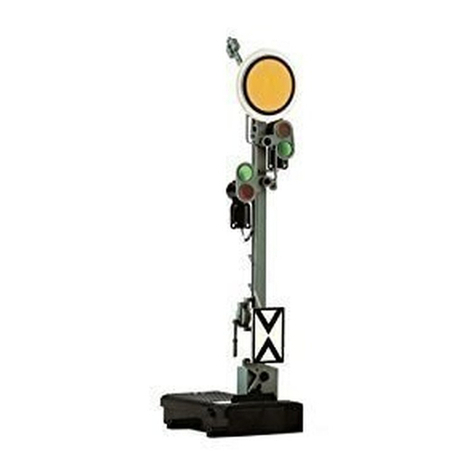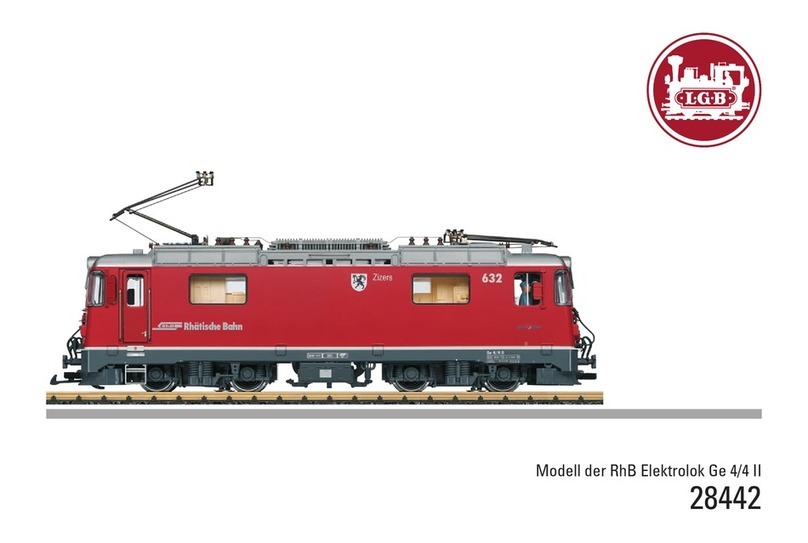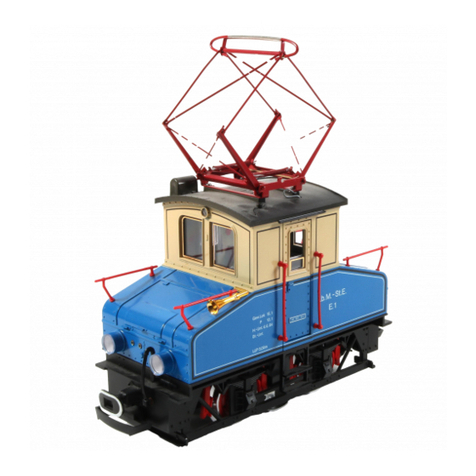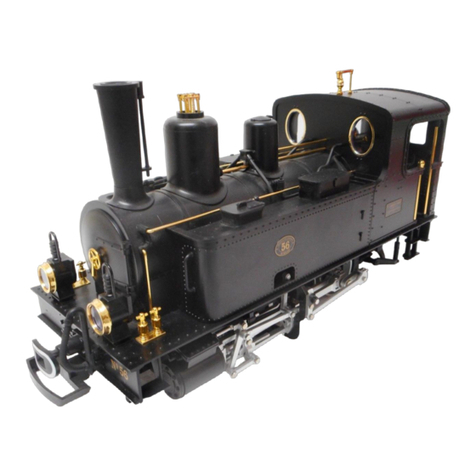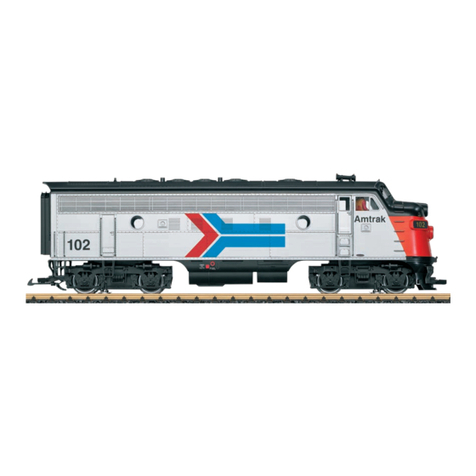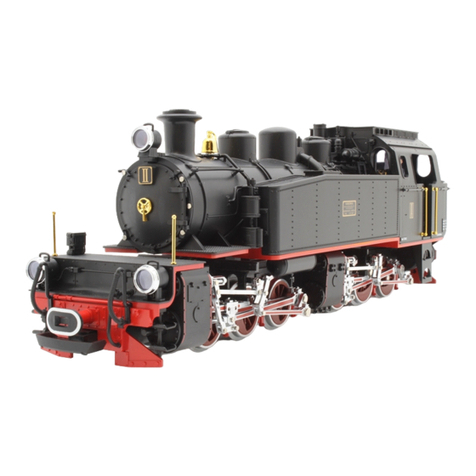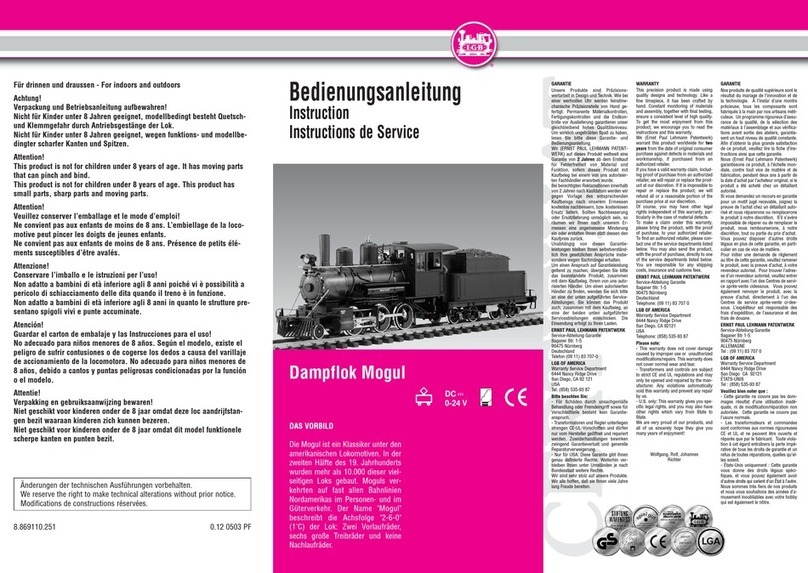5
Multiprotokollbetrieb
Analogbetrieb
DerDecoderkannauchaufanalogenAnlagenoderGleisabschnittenbetriebenwer-
den.DerDecodererkenntdieanalogeGleichspannung(DC)automatischundpasst
sichderanalogenGleisspannungan.EssindalleFunktionen,dieuntermfxoderDCC
fürdenAnalogbetriebeingestelltwurdenaktiv(sieheDigitalbetrieb).
Die Eingebauten Sound-Funktionen sind ab Werk im Analogbetrieb nicht aktiv.
Digitalbetrieb
Der Decoder ist ein Multiprotokolldecoder. Der Decoder kann unter folgenden Digital-
Protokolleneingesetztwerden:mfxoderDCC.
Das Digital-Protokoll mit den meisten Möglichkeiten ist das höchstwertige Digital-
Protokoll.DieReihenfolgederDigital-ProtokolleistinderWertungfallend:
Priorität1:mfx;Priorität2:DCC;Priorität3:DC
Hinweis:Digital-Protokollekönnensichgegenseitigbeeinussen.Füreinenstö-
rungsfreienBetriebempfehlenwir,nichtbenötigteDigital-ProtokollemitCongura-
tionsVariable(CV)50zudeaktivieren.
DeaktivierenSie,soferndiesIhreZentraleunterstützt,auchdortdienichtbenötigten
Digital-Protokolle.
WerdenzweiodermehrereDigital-ProtokolleamGleiserkannt,übernimmtderDe-
coderautomatischdashöchstwertigeDigital-Protokoll,z.B.mfx/DCC,somitwirddas
mfx-Digital-ProtokollvomDecoderübernommen.
Hinweis:BeachtenSie,dassnichtalleFunktioneninallenDigital-Protokollenmöglich
sind.UntermfxundDCCkönneneinigeEinstellungenvonFunktionen,welcheim
Analog-Betriebwirksamseinsollen,vorgenommenwerden.
Hinweise zum Digitalbetrieb
• DiegenaueVorgehensweisezumEinstellenderdiversenCVsentnehmenSiebitte
derBedienungsanleitungIhrerMehrzug-Zentrale.
• DieabWerkeingestelltenWertesindfürmfxgewählt,sodasseinbestmöglichstes
Fahrverhaltengewährleistetist.
FürandereBetriebssystememüssengegebenenfallsAnpassungengetätigt
werden.
mfx-Protokoll
Adressierung
• KeineAdresseerforderlich,jederDecodererhälteineeinmaligeundeindeutige
Kennung(UID).
• DerDecodermeldetsichaneinerCentralStationoderMobileStationmitseiner
UID-Kennungautomatischan.
Programmierung
• DieEigenschaftenkönnenüberdiegrascheOberächederCentralStationbzw.
teilweise auch mit der Mobile Station programmiert werden.
• EskönnenalleCVmehrfachgelesenundprogrammiertwerden.
• DieProgrammierungkannentwederaufdemHaupt-oderdemProgrammiergleis
erfolgen.
• DieDefaulteinstellungen(Werkseinstellungen)könnenwiederhergestelltwerden.
• Funktionsmapping:FunktionenkönnenmitHilfederCentralStation60212(einge-
schränkt)undmitderCentralStation60213/60214/60215beliebigenFunktionstasten
zugeordnetwerden(SieheHilfeinderCentralStation).
DCC-Protokoll
Adressierung
• KurzeAdresse–LangeAdresse–Traktionsadresse
• Adressbereich:
1-127kurzeAdresse,Traktionsadresse
1 - 10239 lange Adresse
• JedeAdresseistmanuellprogrammierbar.
• KurzeoderlangeAdressewirdüberdieCV29ausgewählt.
• EineangewandteTraktionsadressedeaktiviertdieStandard-Adresse.
Programmierung
• DieEigenschaftenkönnenüberdieCongurationVariablen(CV)mehrfachgeän-
dert werden.
• DieCV-NummerunddieCV-Wertewerdendirekteingegeben.
• DieCVskönnenmehrfachgelesenundprogrammiertwerden(Programmierung
aufdemProgrammiergleis).
• DieCVskönnenbeliebigprogrammiertwerden(PoM-Programmierungaufdem
Hauptgleis).PoMistnichtmöglichbeidenCV1,17,18und29.PoMmussvonIhrer
Zentraleunterstütztwerden(sieheBedienungsanleitungihresGerätes).
• DieDefaulteinstellungen(Werkseinstellungen)könnenwiederhergestelltwerden.
• 14bzw.28/128Fahrstufeneinstellbar.
• AlleFunktionenkönnenentsprechenddemFunktionsmappinggeschaltetwerden.
• WeitereInformation,sieheCV-TabelleDCC-Protokoll.
Eswirdempfohlen,dieProgrammierungengrundsätzlichaufdemProgrammiergleis
vorzunehmen.







